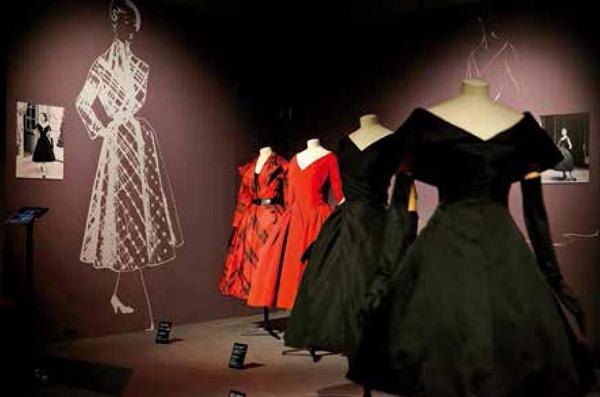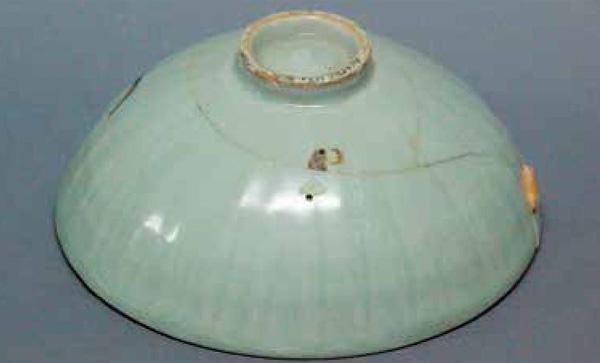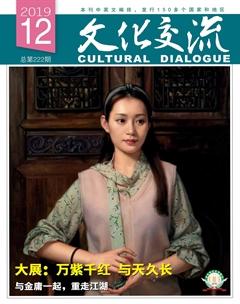在展厅,遇见不一样的浙江
俞吉吉



时光流转,在漫长的历史长河中,人类创造和发展了多姿多彩的文明。这些文明,我们在每一场展览中都能窥见。
除了浙江省博物馆精彩纷呈的展览外,浙江美术馆、中国丝绸博物馆和南宋官窑博物馆等博物馆2019年推出的展览同样耀眼夺目。在展览里,我们看到了不一样的浙江。
浙江美术馆 大展纪念开馆十周年
今年,是吴冠中先生诞辰100周年,全国很多地方都在办他的纪念展。然而,浙江美术馆举行的“我负丹青——纪念吴冠中诞辰100周年作品展”别有意义。展览展出吴冠中及其家属向浙江美术馆捐赠的吴冠中油画与墨彩画、《云南行》速写组画与“汉字春秋”系列、吴冠中师友作品等藏品115件。
对于著名艺术家吴冠中,很多人并不陌生,却也并不了解。正如他的儿子吴可雨对媒体所说,“今天,听到吴冠中的名字,多数人第一反应是:他的画价最高。希望大家看完展览,能真正了解吴冠中是一个什么样的人,是一个怎样的艺术家。”
这一点,跟吴冠中生前说的话不谋而合:“你们想念我,就到我的画里找我,我就活在我的作品里。”
吴冠中先生毕业于杭州国立艺专,浙江是他的艺术萌发地,他把浙江称为他的“艺术的第一故乡”。2009年12月,吴冠中出于对母校的回报,对浙江深厚的艺术情愫,对浙江美术馆藏品建设的支持,无偿捐赠绘画作品56件艺术藏品16件,为浙江增添了宝贵的艺术财富。2010年8月,吴冠中逝世。同年11月,浙江美术馆举办“东西冠中——吴冠中大展”,他的儿子吴可雨又向浙江美术馆捐赠吴冠中重要的48幅速写作品《云南行》。
值得一提的是,这次展出的《云南行》48幅速写组画,是吴冠中于1978年到云南采风写生创作的。在他的笔下,云南边陲的山水人物、风土乡情,得到了生动、鲜活和逼真的再现,体现了一位艺术大师善于捕捉素材、捕捉感受、捕捉构思、捕捉构图而写形写神写情的卓越艺术。是吴冠中艺术思想得到解放、焕发蓬勃生机的重要作品。
“我负丹青——纪念吴冠中诞辰100周年作品展”是浙江美术馆为纪念开馆十周年推出的展览之一。除此之外,还有其他大展也相当不错——
“纸上谈缤——中华纸文化当代艺术展”:造纸术是中国古代四大发明之首,纸作为记录人类文明发展的重要载体,始终伴随着中华文化繁衍历程并与其息息相关。该展览围绕“纸”这一历史悠久的中国传统文化介质,深入阐释“纸文化”在推进中华文明千载流变中的共生经验,洞察传承意蕴。
展览以纸艺术作品为视觉主体,从纸的物质材料属性与文化艺术属性分别进行叙述,旨在诠释当代艺术在中华传统文化传播流转层面上的不懈努力与孜孜探索,反映当代艺术家对中华文明物质遗产的守护与全新解读。展览特别邀请了梁铨、胡伟、陈琦、施慧、Bruno Walpoth()、Ewa Latkowska()、Fabio Lantinori()、Chika Ohgi()、Shin Ho Yoon()等近40位国内外知名艺术家,为观众带来全新作品,既有架上、雕塑作品,也有装置、影像等丰富的新媒介艺术语言创作的作品。
“心相·万象——大航海时代的浙江精神”:展览以大航海时代的中外交流史为考量背景,精选120余件()明代与清初时期浙籍及旅浙精英人物创作的书法、绘画作品及相关的文献史料、木刻古籍为主要展品,观照15至17世纪浙江与海外的各种交流。展品包括首次走出南京博物院的《坤舆万国全图》、王阳明《草书七言诗》、独立性易《养生铭》、东皋心越《竹石花鸟图》、黄宗羲《与郑梁书》、“秦淮才女”柳如是《奉送兵宪沁州王公泊翁老祖台容擢济南大参叙》、徐渭《易窑谱》等等重要的明代古籍文献、书画作品。
中国丝绸博物馆 行走于传统和时尚之间
“这家博物馆认真起来,都没有其他网红‘打卡地什么事儿!”网友口中的博物馆正是位于杭州玉皇山脚下的中国丝绸博物馆()。这座看起来十分摩登的建筑里典藏了上下五千年的服饰文化,记载着从中国发源的丝绸之路的点点滴滴。
时尚范十足的国丝馆推出了酝酿两年的Dior大展,一时间吸引不少年轻潮人前往观看。作为国丝馆首次收费展,“迪奥的迪奥Dior by Dior(1947~1957)”聚焦迪奥先生在任11年内的创作生涯,通过总计100余件高级订制时装、配饰、面料、刺绣小样和设计手稿,配以印刷出版物及影像资料,带领观众领略迪奥先生的时尚美学,重返高级时装的黄金年代。
与市面上很多的迪奥展不同,本次展览除了聚焦迪奧先生在任11年内的成就外,也聚焦了那些大师之作的幕后英雄们,如工匠、纺织工人等,讲述了他们如何成就了这个享誉世界的时尚品牌且经久不衰。
坚守传统工艺,弘扬优秀传统文化,是中国丝绸博物馆的一大标签。“梅里云裳:中韩合作嘉兴王店出土明代服饰修复与复原展”展出了中韩合作修复的以李湘之妾徐氏墓(M4)出土服饰为主的明代女式服饰,还有多件服装的复原件及制作工艺。明代的对襟上衣、大袖衫、纱裙、绸裤……绫罗绸缎在这里是褪色的岁月,也有了现代的靓丽阐释。丝丝入扣,经纬交织,梅影现兮;银针飞走,彩线纳绣,云裳飘兮。历时6年,中韩携手复原明代服饰,再现了古人着装。
中韩两国相距甚近,曾几何时,中国明朝和韩国朝鲜王朝之间的文化交流是如此密切,衣冠服饰是如此相似。同期亮相时装馆的“一衣带水:韩国传统服饰与织物展”很好地再现了两国一衣带水的历史渊源和深厚情谊。
展览展出韩国传统文化大学纤维专业师生通过考证复制的14~20世纪韩国服装和纺织品115件,其中“传统服饰”板块展示了韩国传统服饰50余套/件,分王室服饰、礼服等七个系列;“传统织物”板块展示了应用韩国国家级纺织非物质文化技艺制作的“春布”、近期研究复原的已失传的织金、罗、纹缎、纹绫等复原织物及介绍现代机器织造生产的各类韩国服装面料。
这些韩国传统服饰及纺织品,如此集中地在中国的博物馆内展出,在国内还是首次。
南宋官窯博物馆 再现杭城70年考古史
今天的杭州,是传统与现代交融的中国江南山水城市的典范,是五湖四海来客心的人间天堂,是每一位杭州人魂牵梦萦的故乡。当我们沉醉其中时,是否会遐想:百年前,千年前,亦或是万年前,这片土地又是什么模样?
南宋官窑博物馆的“发现杭州——新中国成立70周年杭州地区考古成果展”集中展示新中国成立后杭州地区专业系统考古取得的丰硕成果。500余件展品的超大规模,还原了历史的真实面貌;从史前到明清,跨度巨大;覆盖杭州全域考古项目的广阔视角,书写大杭州的城市演进史。
70年来,杭州考古人在城市建设与文物保护的双重职责下,奔波于一个又一个发掘现场:良渚玉器与良渚文化遗址、“中华第一舟”与跨湖桥文化遗址、萧山水漾坞六朝墓、吴越国王钱氏家族墓、南宋临安皇城遗址、元代朝晖路窖藏、明代洪武窖藏、清代行宫遗址……老中青三代考古人书写下这座城市的成长史。
器物无声,背后的故事耐人寻味。
展览中的越窑青瓷摩羯鱼杯是一件弥足珍贵的器物,去年在吴山广场地铁建设的工地上破土而出。它头部虽已破损,但拥有罕见的器型,而且工艺精致、刻画生动,有人说它是杯子,有人说它是灯具,有人说它是北宋时期的酒具,谜团尚待揭晓。
这里还展现了浙江最大钱币窖藏的发现史。2010年的一天,在杭州蒋村的一处建筑工地上,施工人员无意中挖出不少古钱币,引起众人哄抢。经过抢救性发掘,至今为止浙江最大的钱币窖藏出现了。这处窖藏出土了总计37万余枚古币,涵盖110多个品种,跨越西汉至明代1500多年。
龙泉窑青瓷带锔钉莲瓣碗是出土于南宋德寿宫遗址的“马蝗绊”,锔钉的年代比这次在浙江省博物馆展出的日本那件国宝器“马蝗绊”更早。
从吴山广场到蒋村,从桃源岭到临安城,从百井坊到密渡桥……在这场琳琅满目的展览中,你会看到很多熟悉的地名。你还会忍不住惊叹,原来脚踩的这片土地下,藏着如此丰富的过去,那是你以往没有留心过的杭州。
In 2019, the museums in Hangzhou have held a series of exhibitions. Zhejiang Museum has held some heavy-weight exhibitions in celebration of the 90th anniversary of the founding of the museum. Zhejiang Art Museum, China National Silk Museum, Southern Song Imperial Kiln Museum and other museums in Hangzhou also held series of exhibitions. These exhibitions add up to form a big picture of the provinces history, culture, and tradition.
Zhejiang Art Museum
The year 2019 marks the 100th anniversary of the birth of Wu Guanzhong (1919-2010), one of the best known artists of China in modern times. Exhibitions have been held across the country to honor the master, but the exhibition from August 9 to September 8, 2019 in Hangzhou was special. On display were 115 artworks in three sections: Wus oil paintings and colored ink paintings, Wus 48 sketches done on his 1978 trip to Yunnan, and works by Wus friends and students.
In December 2009, Wu Guanzhong donated 56 artworks created by himself and artworks by others in his collection to Zhejiang Museum. In November 2010, three months after Wu passed away, his son Wu Keyu donated the 48 sketches about Yunnan to Zhejiang Museum. “I dont want my father to be remembered as an artist whose artworks are sold at astronomical prices,” emphasized the son at the launching ceremony of the exhibition in 2019. “I hope you can understand what kind of person my father was and what kind of artist my father was after you view the exhibition.”
China National Silk Museum
It is only natural for Hangzhou to have this national museum, for silk originated in Zhejiang as testified by archaeological findings. Zhejiang is a key part of Chinas Silk Road that crossed the nation and reached the other parts of the world for thousands of years. The museum has a huge following on the internet. It is one of the must-visit spots for thousands and thousands of fans. China National Silk Museum is by no means a place where ancient silk products are stored, exhibited and studied. The museum is engaged in many activities that point to a future when silk will continue to play a key part in human life. Part of the space of the museum is dedicated to modern fashions.
In September, , an exhibition started at the museum. The exhibition will be closed in January 2020. The exhibition honors Christian Dior (1905-1957), a French couturier noted for his innovative fashions. The exhibition focuses on the 11 years from 1947 when Dior as a fashion house came into being to 1957 when the couturier passed away. Also on display are works by backstage heroes such as craftspeople and textile workers who contributed to the glory of Dior.
Another big event at the museum was from March 15 to May 5, 2019.
The exhibition was all about the gloss and glory of womens silk fashion of a family living in the Ming Dynasty (1368-1644) of China restored by Chinese and Korean antiquarians who worked in partnership. Most of the exhibits were selected from the archaeological findings from the tomb of the Xu-surnamed concubine of Li Xiang, a man from an influential clan living in present-day Wangdian Town in Jiaxing, Zhejiang Province. The findings from the tomb of one of Lis concubines were shipped to Hangzhou, where textile conservators of the China National Silk Museum and the Korean National University of Cultural Heritage of South Korea started a restoration project in partnership. The restoration of two of the unearthed silk pieces took six years to complete. The result is two immaculate pieces elaborately adorned with embroidered patterns. Visitors found it hard to imagine how the dust-laden silk fragments from about 500 years ago could be put together again. Behind the virtuosity is a wide range of preservation techniques and expertise for all types of media and material.
Southern Song Imperial Kiln Museum
The museum in Hangzhou testifies to some historical facts: the Southern Song Dynasty (1127-1279) was housed in present-day in Hangzhou and the imperial kilns produced finest porcelain pieces for the royal house.
On September 27, the museum unveiled a retrospection on the archaeological discoveries in the past seven decades. The exhibition is going on until March 29, 2020.
As modern Hangzhou has been experiencing massive urbanization on the strength of booming economic and social growth in the past 40 years, an incredibly large quantity of precious cultural relics have been unearthed. More than 500 exhibits testify to the past glory of the city. The city not only served as the capital of the Southern Song but also the capital of the Wuyue Kingdom (907-978). If we go further back, the city of the ancient Liangzhu Culture of 5,000 years ago has been found in a suburb of Hangzhou. The archaeological investigation is still going on. Further back in time, a canoe was unearthed in 2002 at the 8,000-year-old Kuahuqiao site. It is the most ancient canoe ever found in the world. One day in 2010, some workers at a construction site in Hangzhou stumbled into a huge underground hoard of ancient coins. Eventually archaeologists unearthed more than 370,000 coins. The coins are registered into 110 different categories and indicate a period of 1,500 years from the Western Han (206BC-8AD) to the Ming (1368-1644). It is the biggest hoard ever found in the province.

